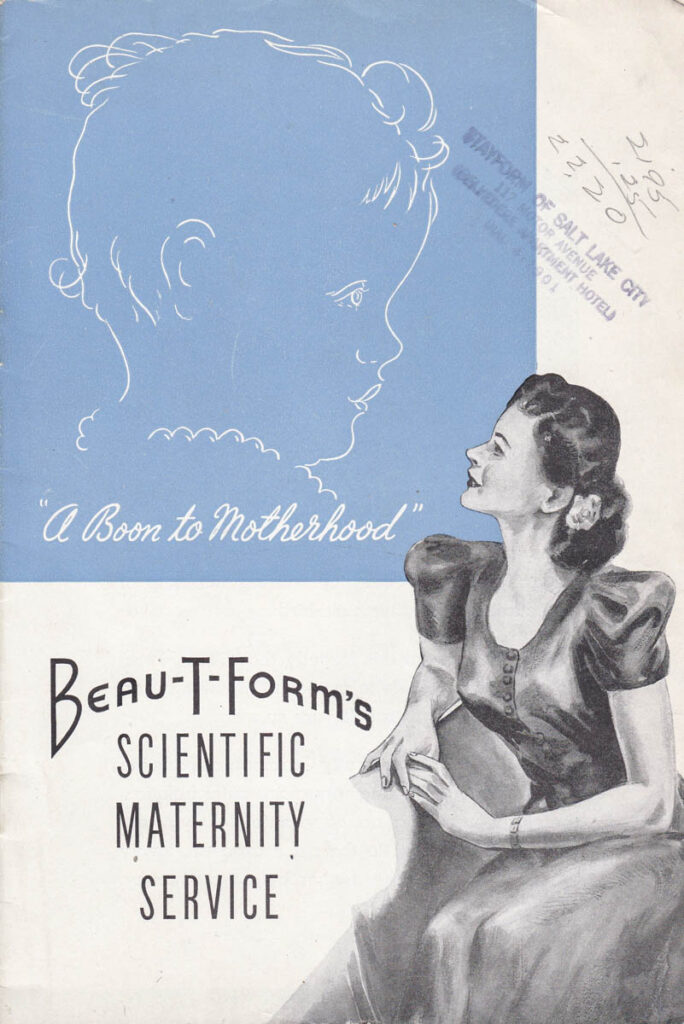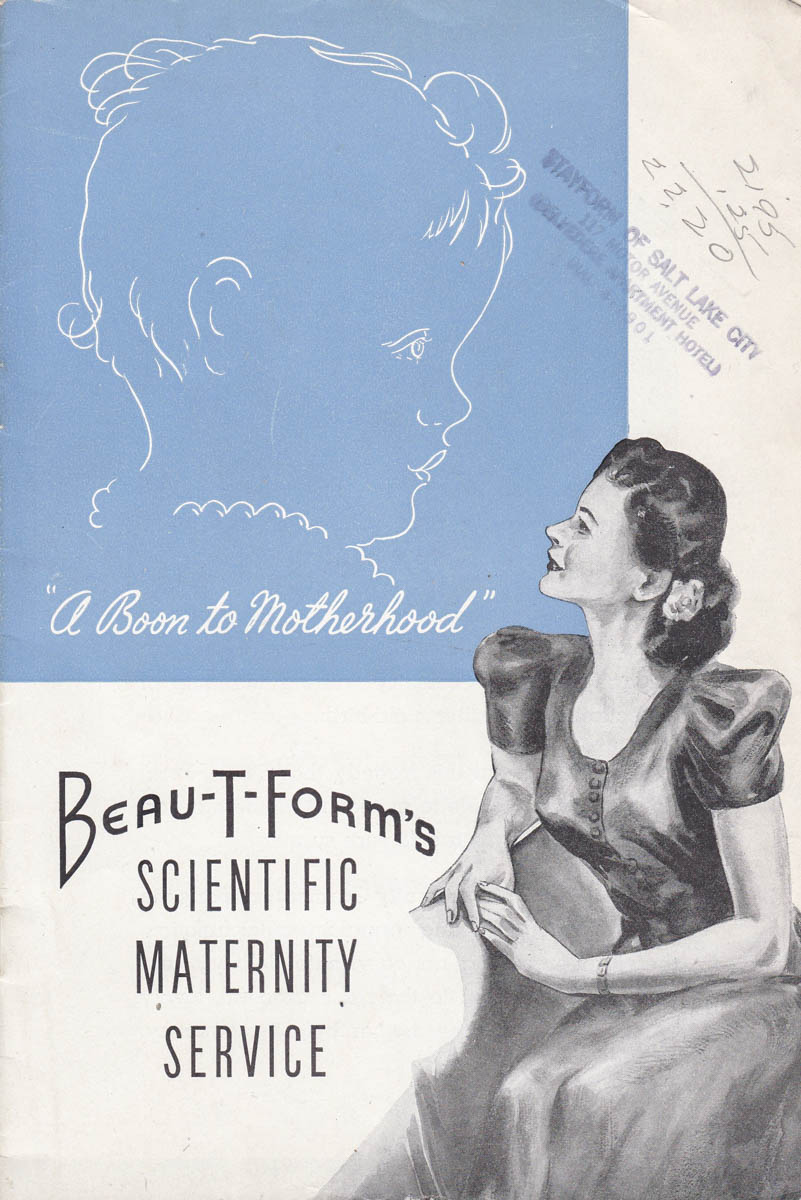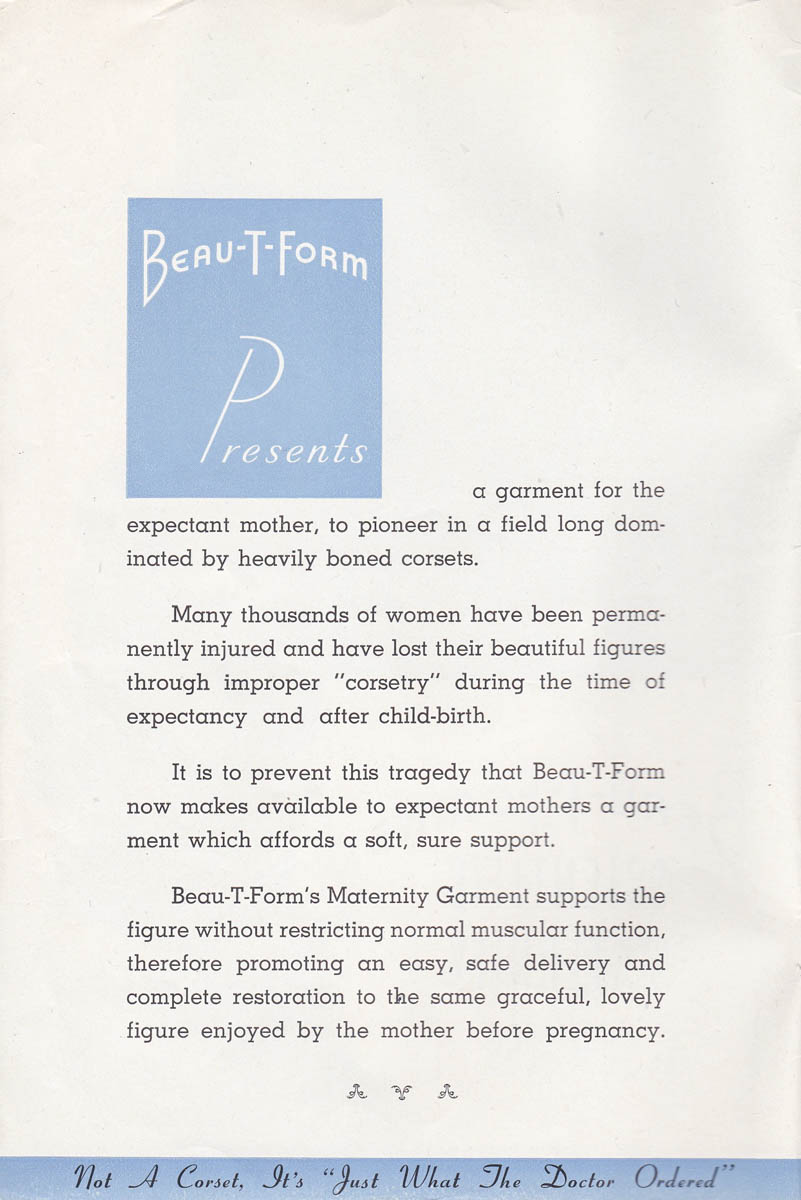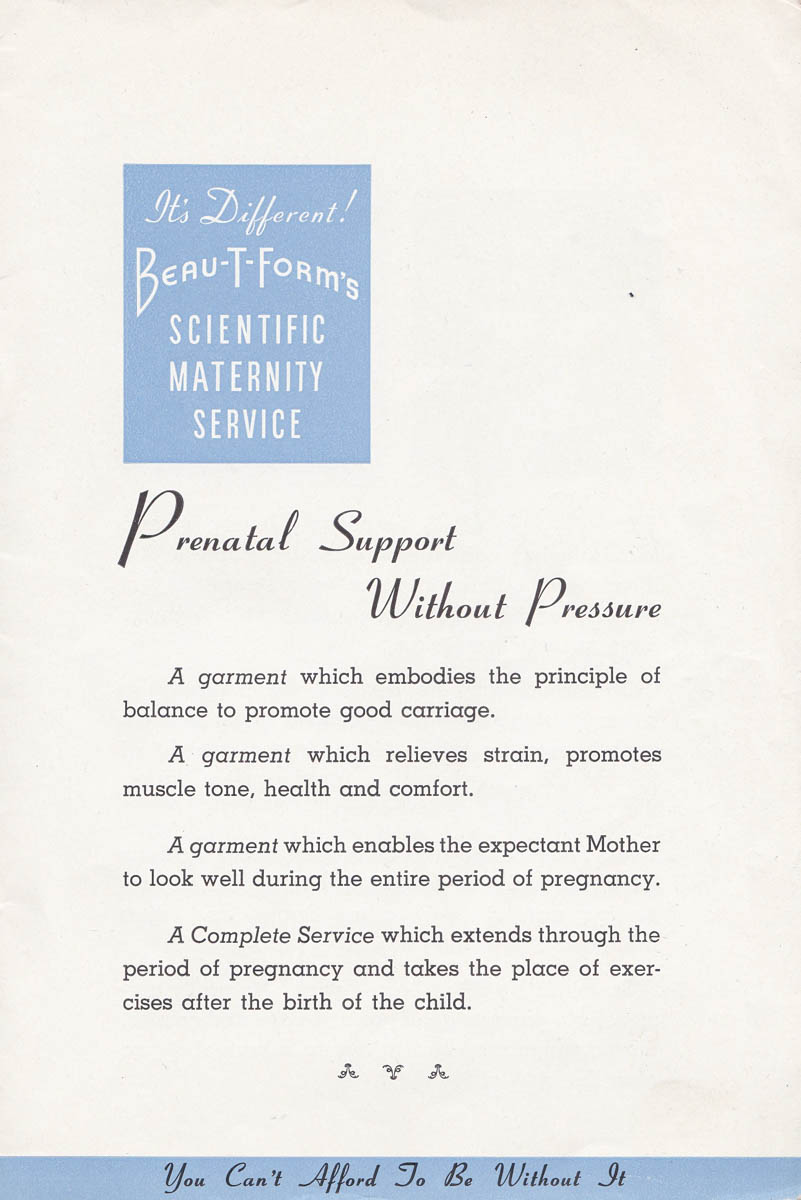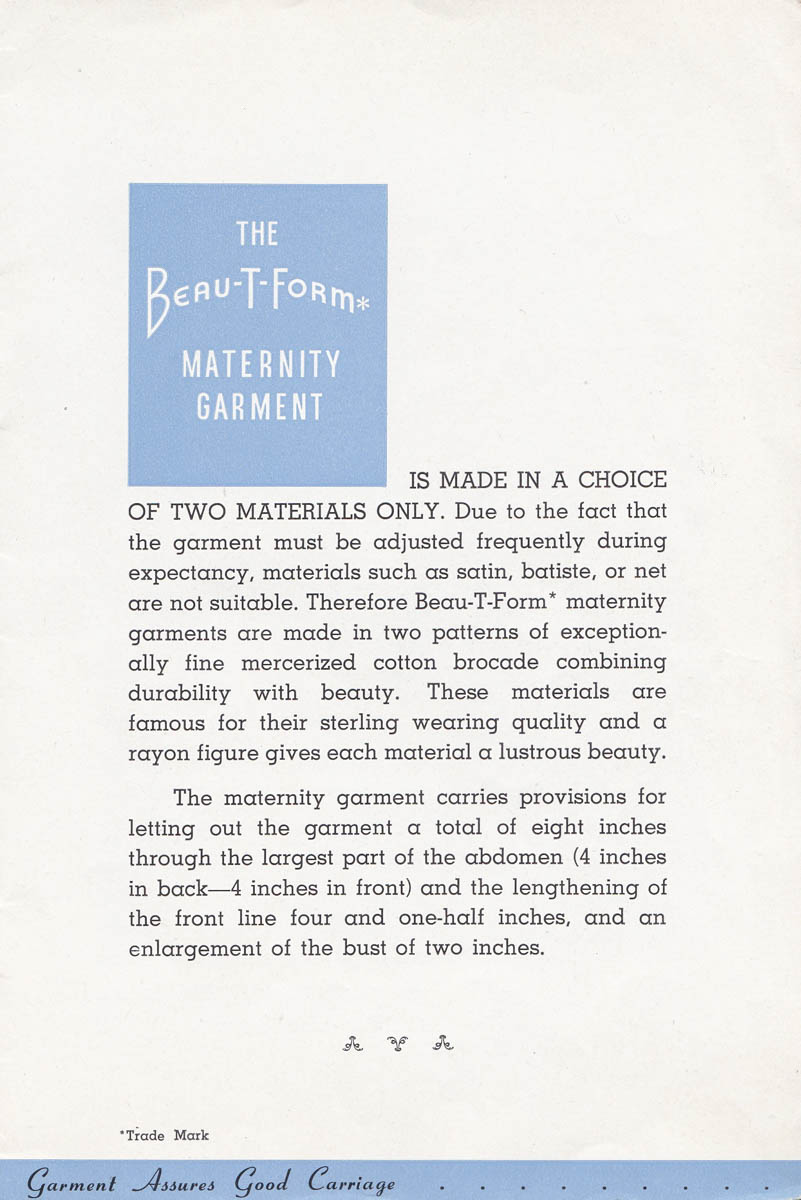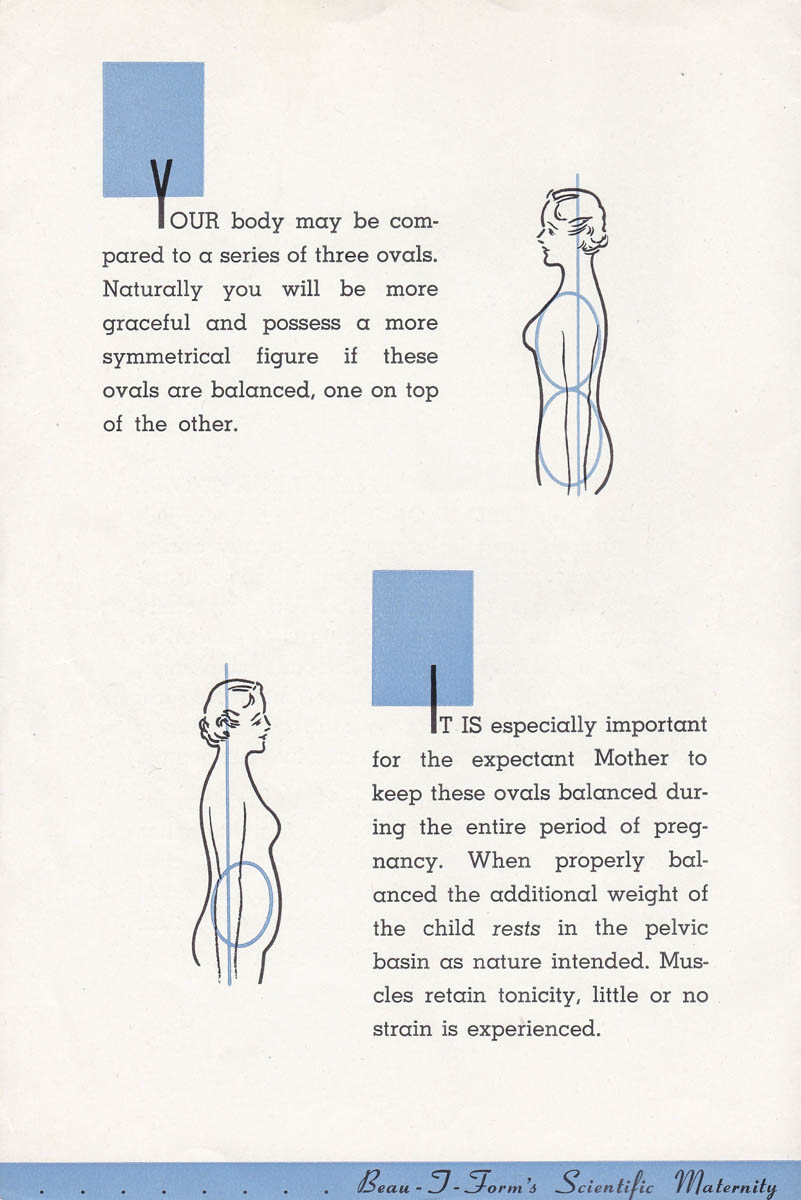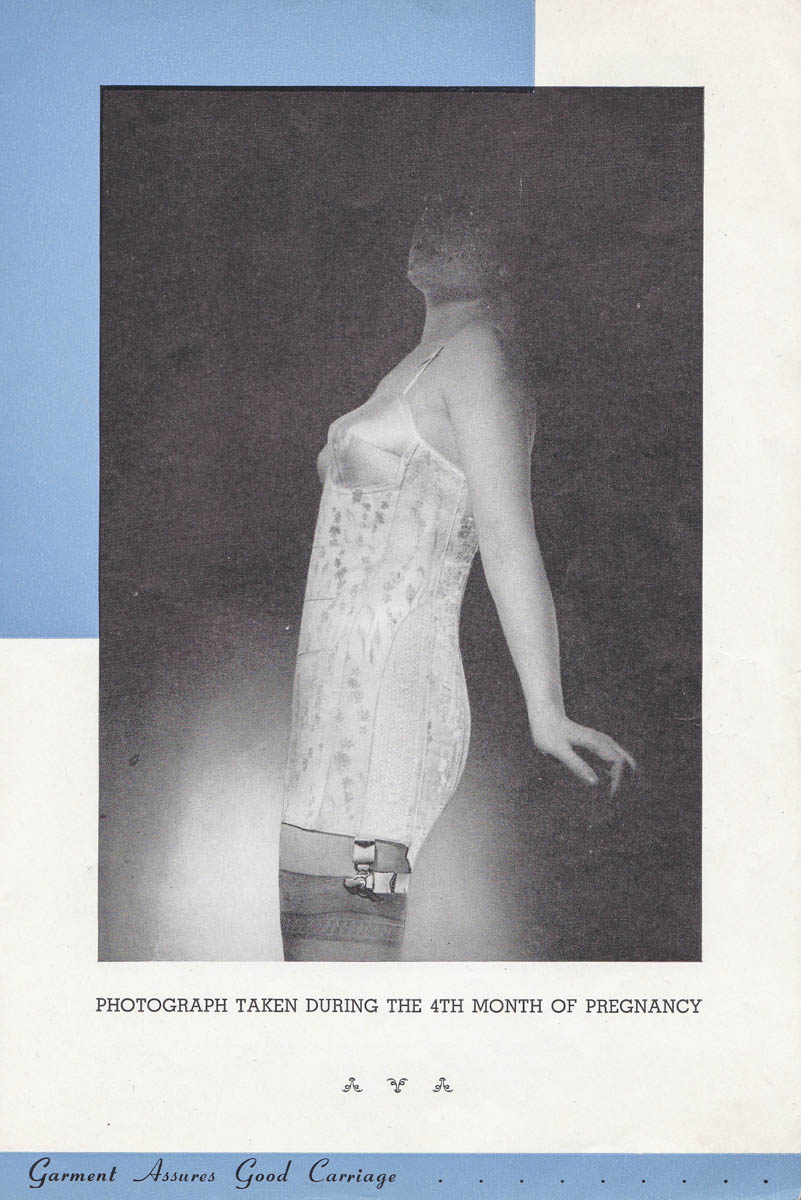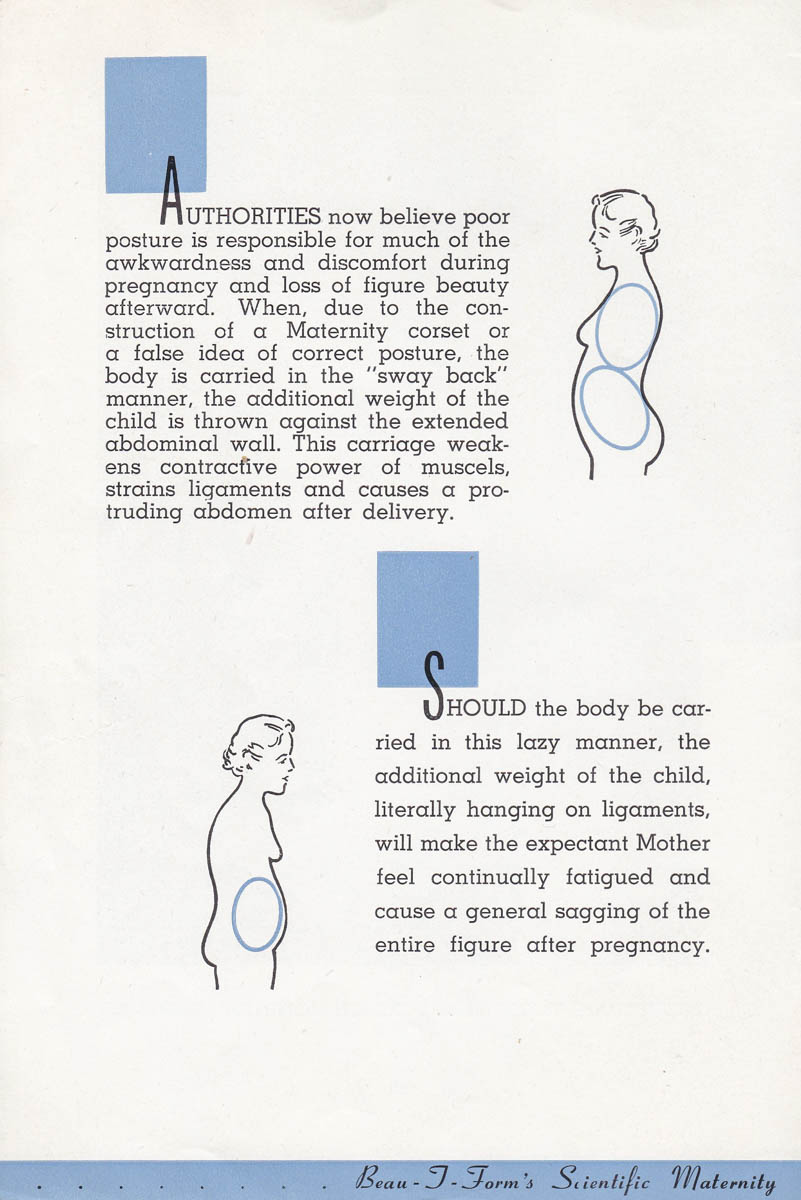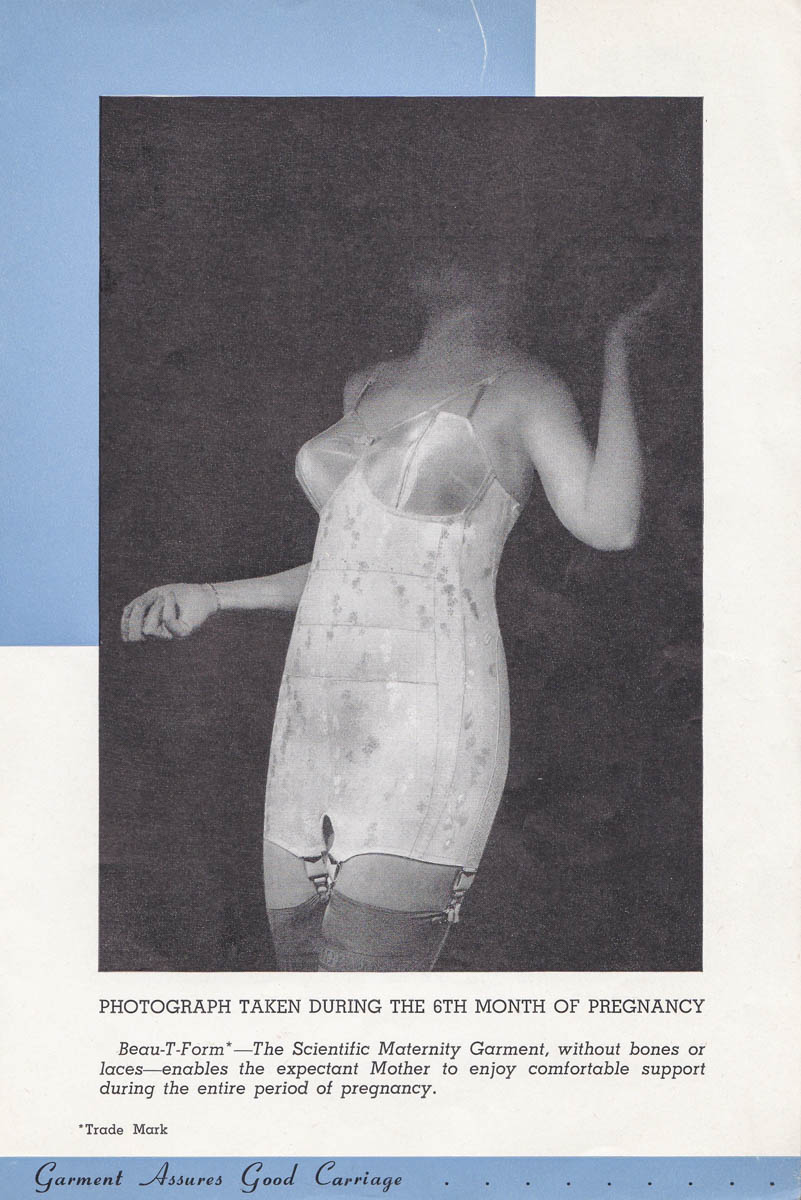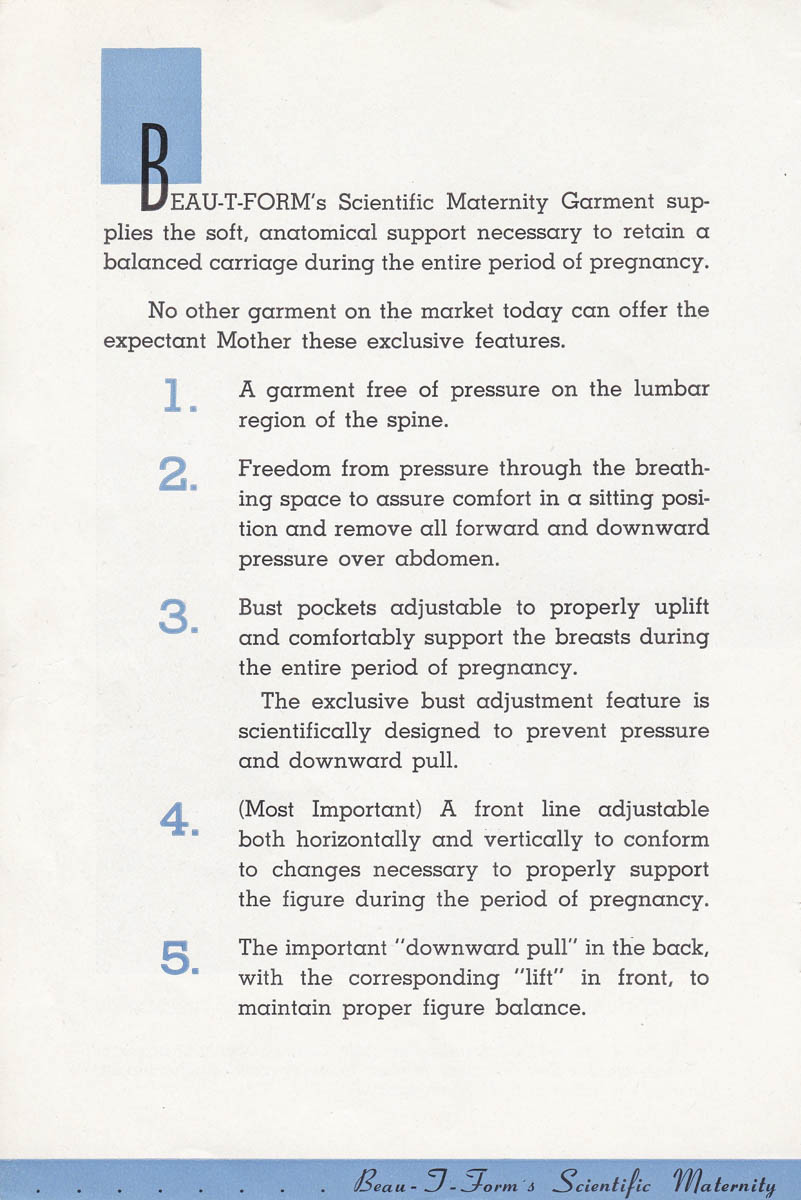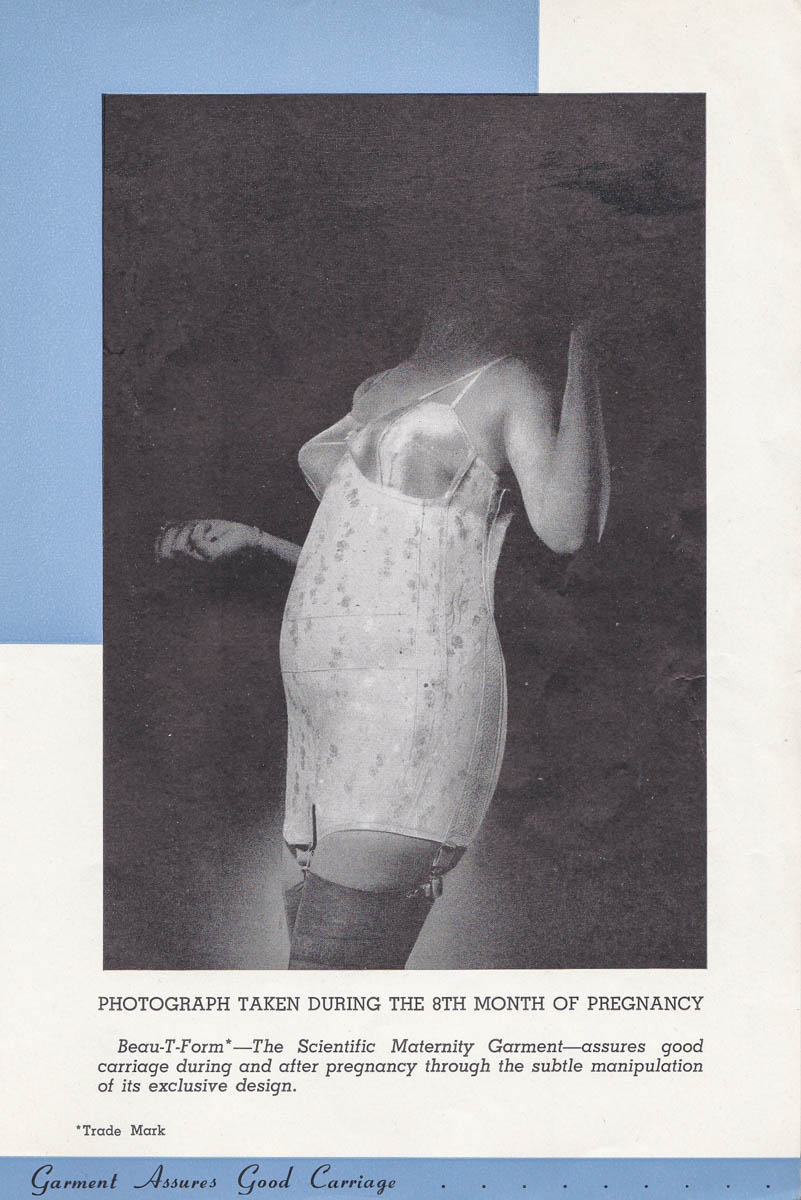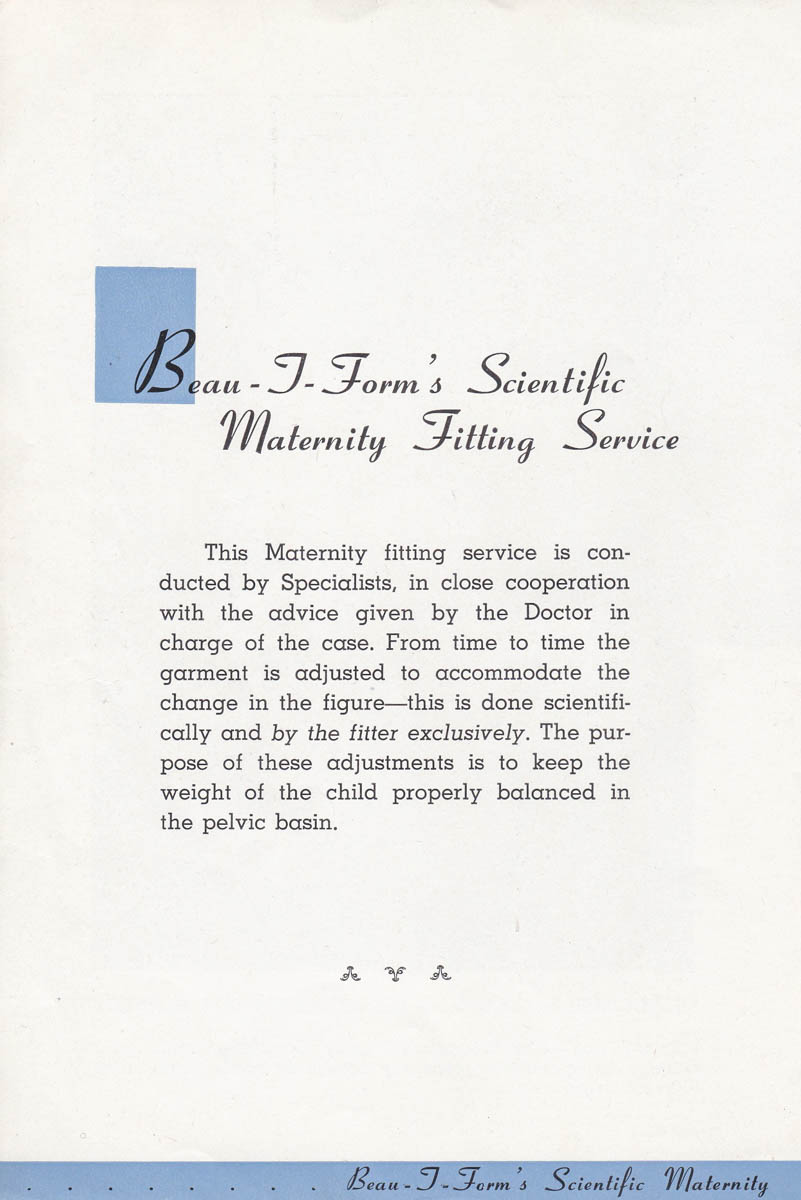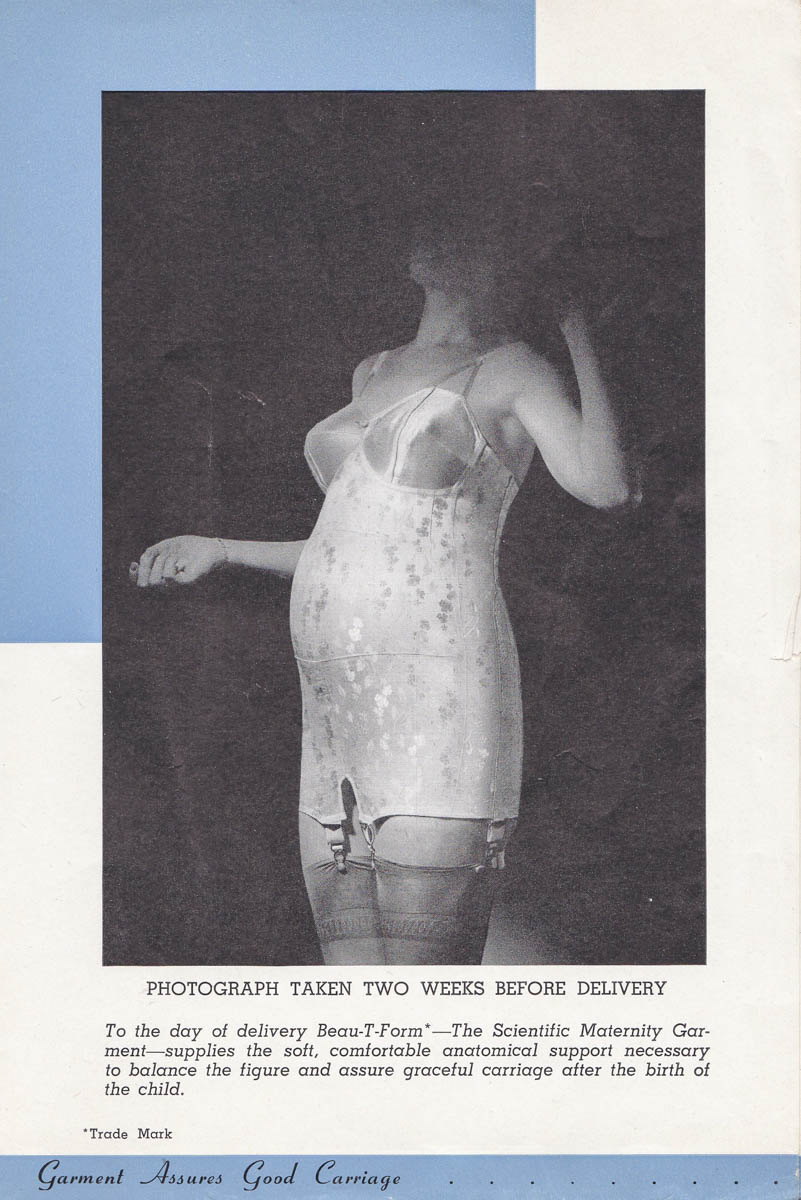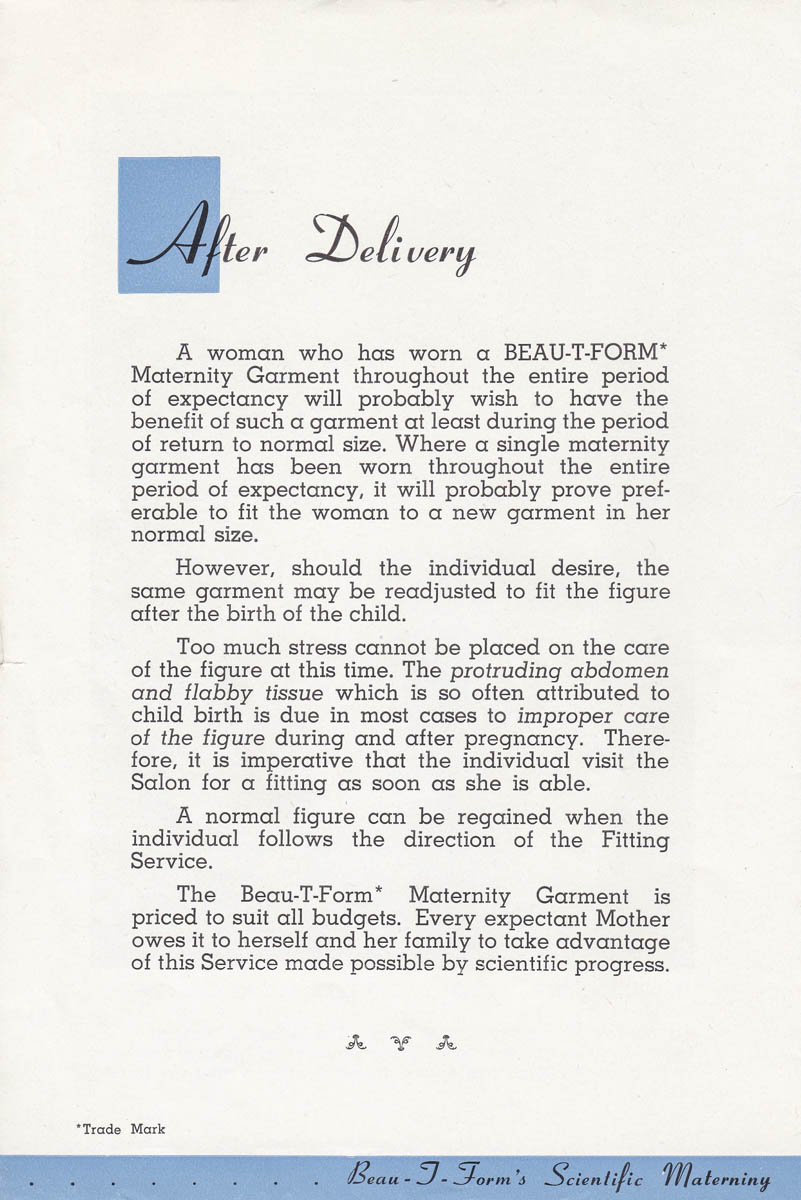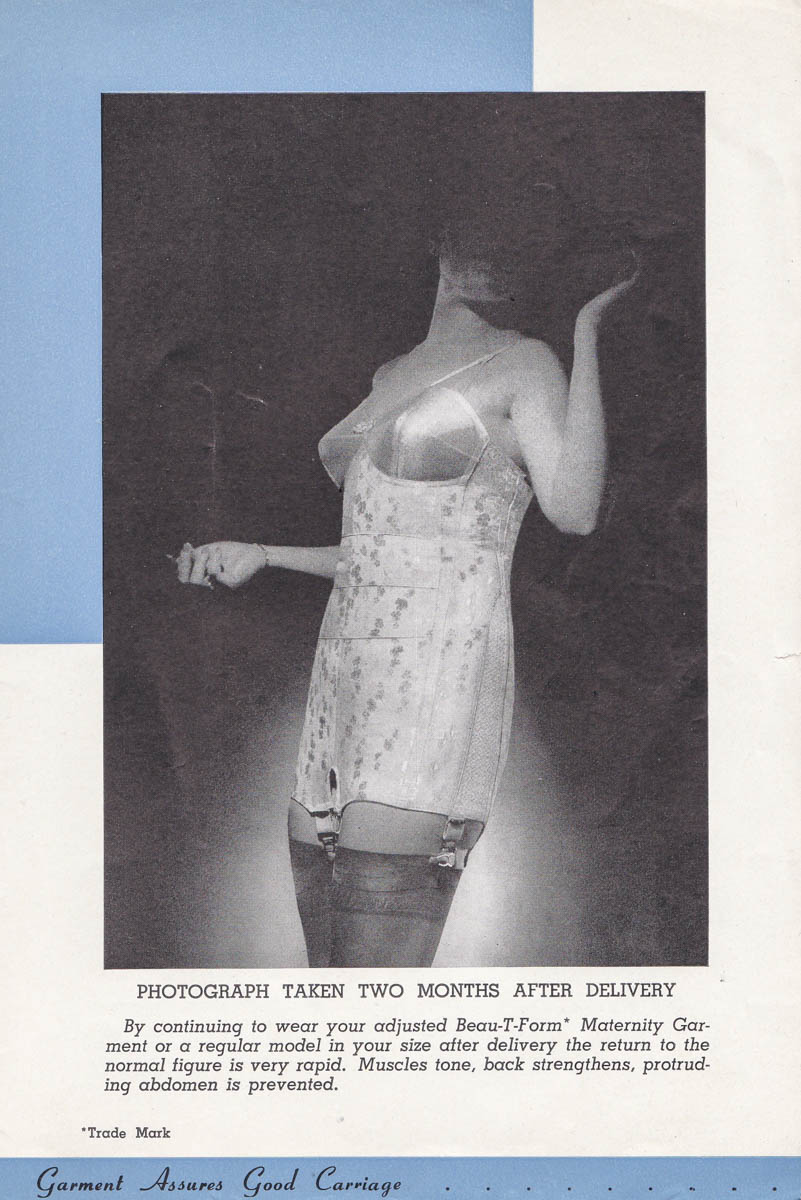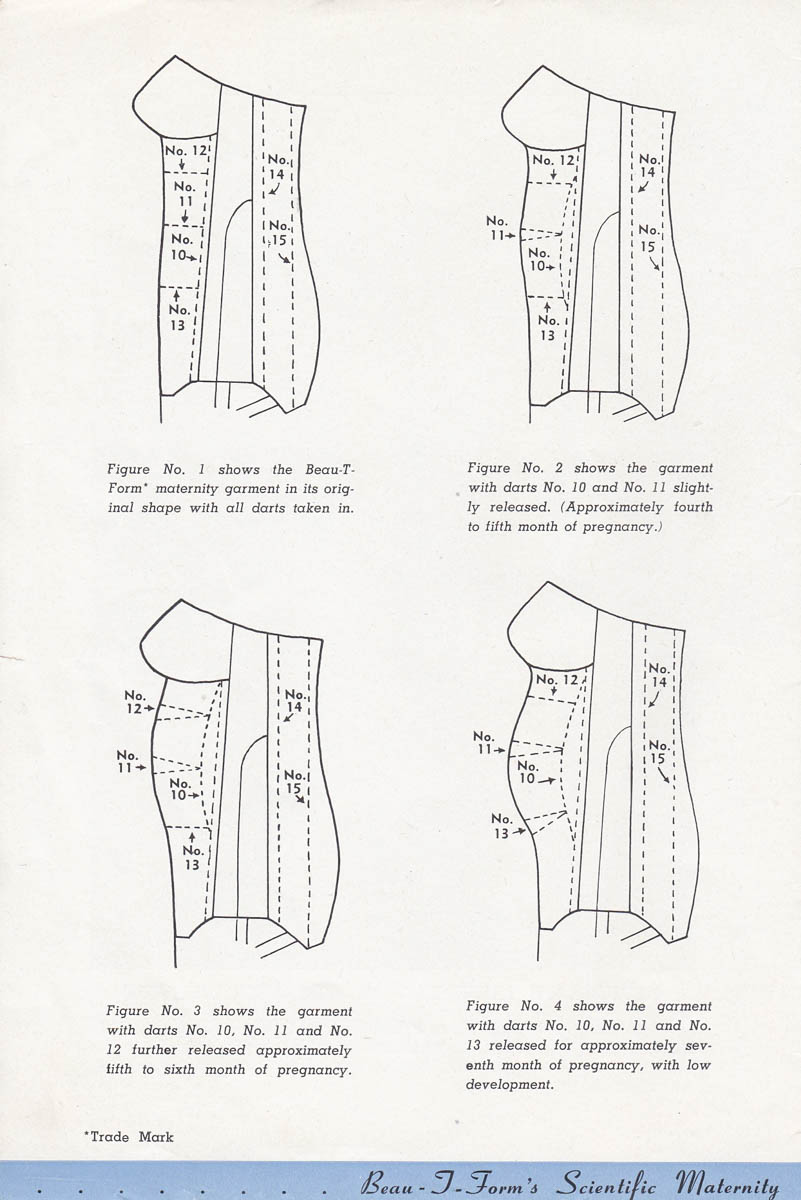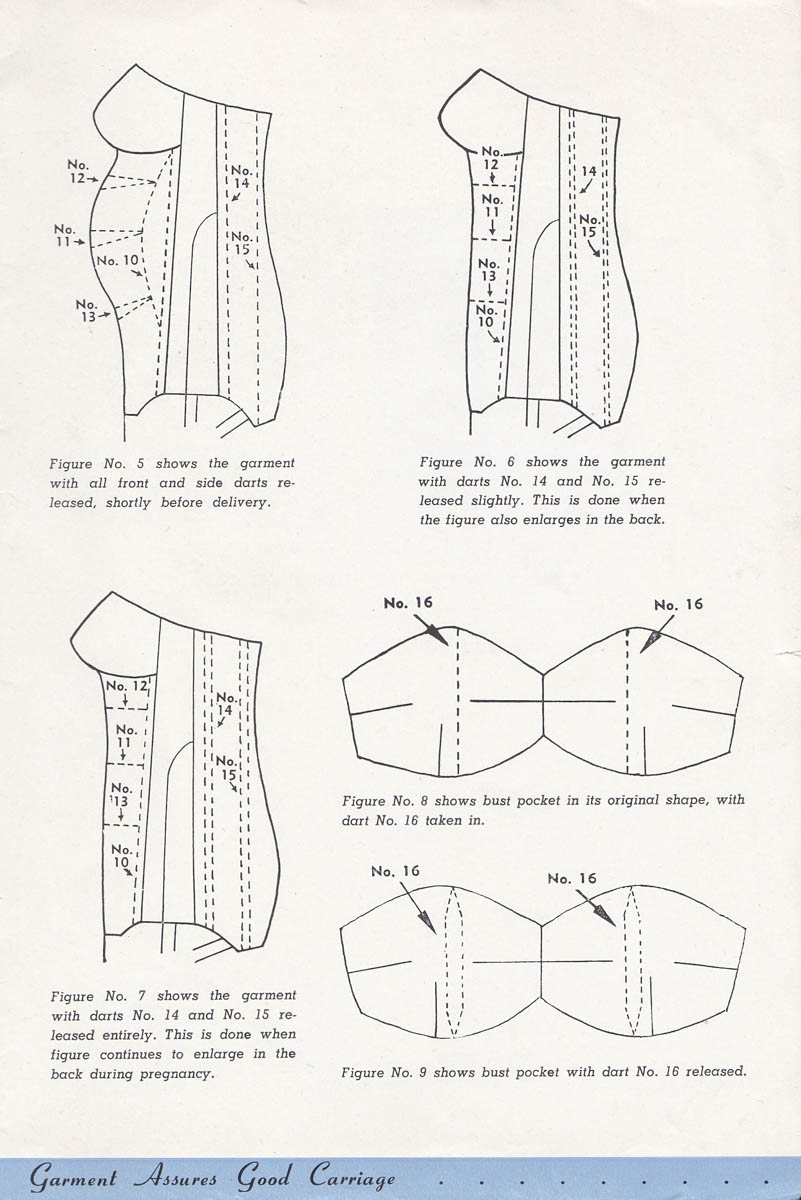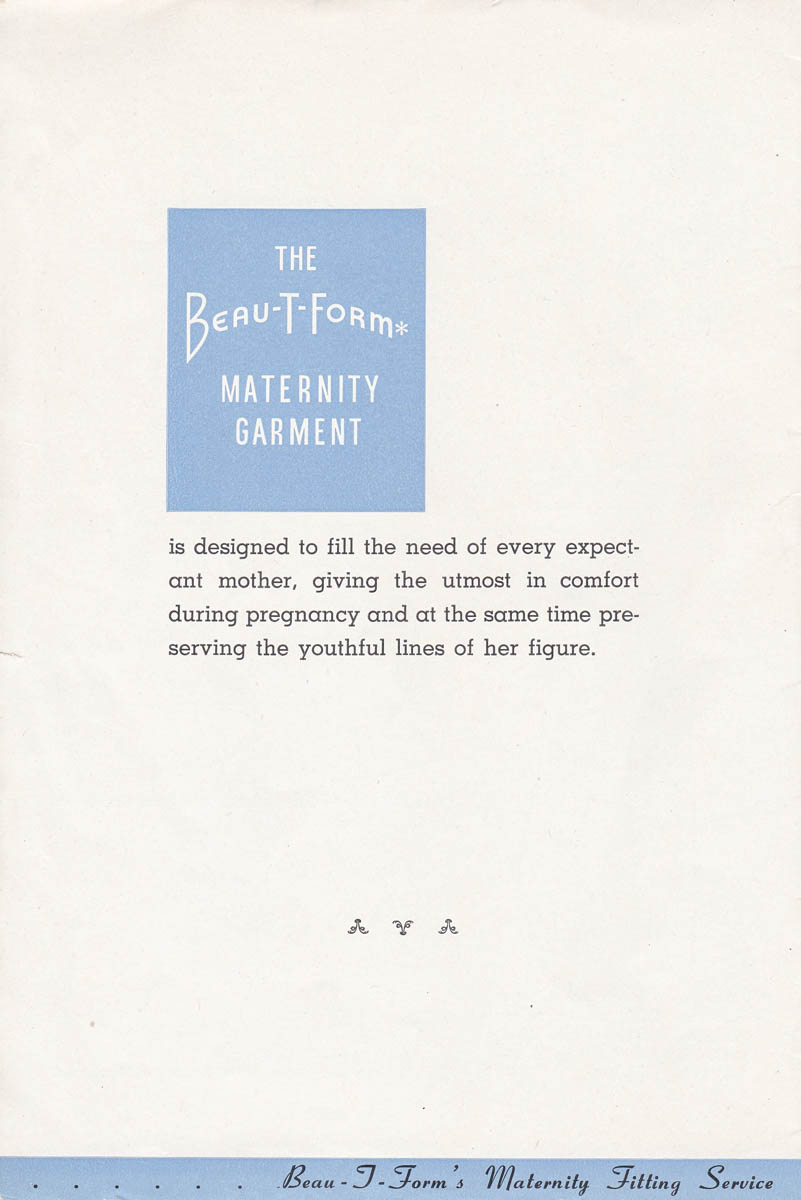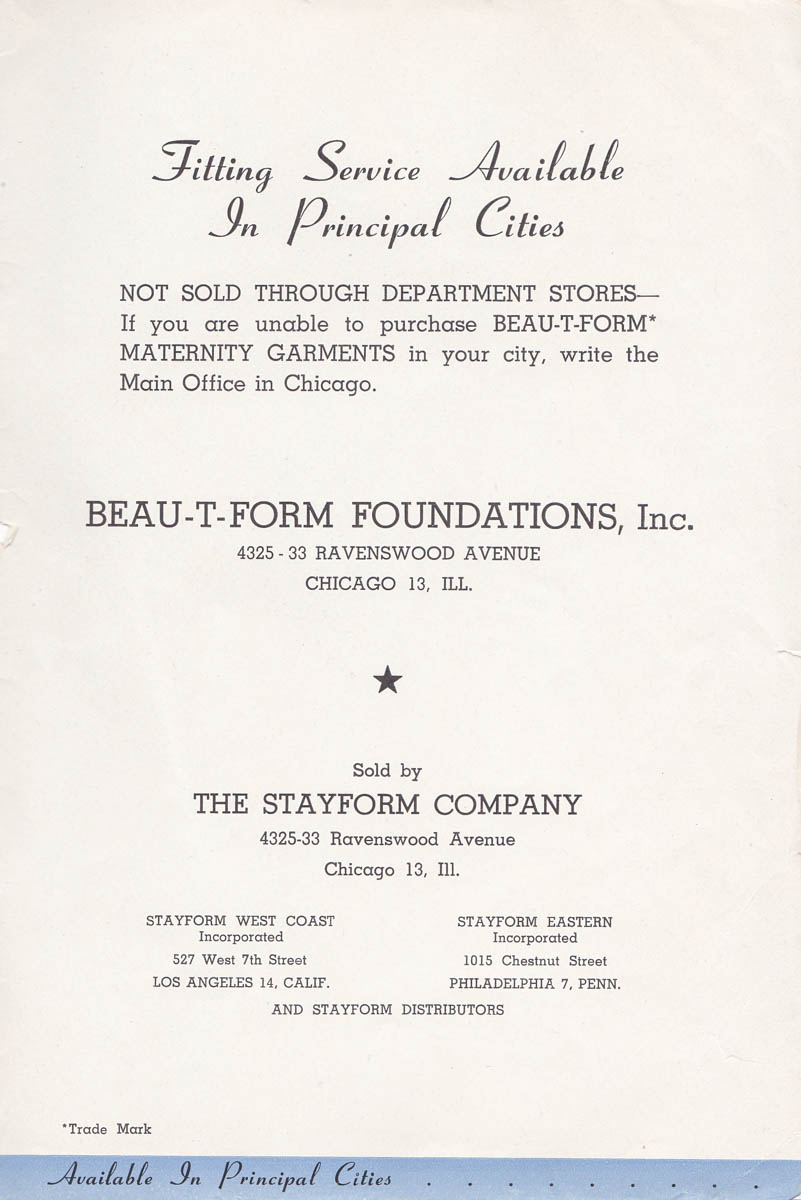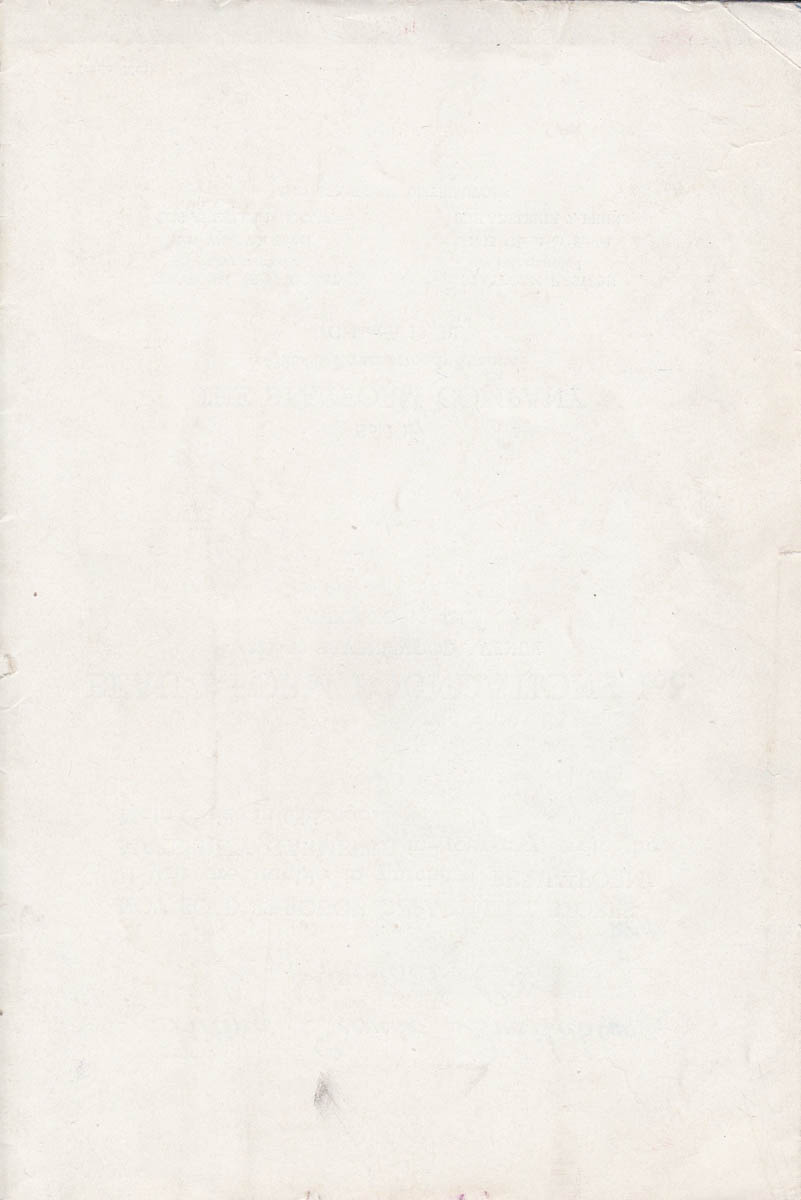Date: 1949
Origin: USA
Brand: Stayform
This 1949 catalogue advertises maternity corsets from “Beau-T-Form’s Scientific Maternity Service,” produced by Stayform foundations. It warns that “improper corestry” can cause injury and the loss of the mother’s pre-pregnancy figure, and in contrast, these maternity corsets promote “easy, safe delivery and complete restoration to the same graceful, lovely figure enjoyed by the mother before pregnancy.” The tagline reads, “Not A Corset, It’s ‘Just What The Doctor Ordered.’” The catalogue continues to claim that the undergarments enable “the expectant Mother to look well during the entire period of pregnancy,” and is “a Complete Service which extends through the period of pregnancy and takes the place of exercises after the birth of the child.”
Five key elements of the maternity corset, as outlined in the catalogue, are the lack of pressure on the lumbar region, lack of pressure on the abdomen, adjustable bust, a frontline adjustable both horizontally and vertically to accommodate the stomach, and a “downward pull” in the back to help maintain “proper balance.” The catalogue includes diagrams of the proper carriage for an expectant mother, using a comparison with ovals. If good posture is not maintained, it will “cause a general sagging of the entire figure after pregnancy.” This echoes other Stayform catalogues, such as this one in the Underpinnings Museum collection, which also emphasizes the scientific nature of the products and the necessity of good posture.
The foundations are only available in two material choices: two different patterns of mercerized cotton brocade. The garment can be expanded up to eight inches at the widest point of the torso (four inches in the back and four in the front), can be lengthened by four and a half inches, and the bust can be widened by two inches. There are illustrated diagrams labeling each dart and showing how they are released to expand the garment over the course of the pregnancy. Models are photographed wearing the corset, at four, six, and eight months of pregnancy, as well as two weeks before delivery and two months after delivery.
Also advertised a fitting service, done by “Specialists.” The fitting is done “in close cooperation” with a doctor, and garment adjustments are meant to be done “by the fitter exclusively.” The catalogue also stresses that it is “imperative” that the mother visit to be refitted for a new garment (or to adjust her old one) after delivery. The garments are not sold in department stores, but are available in “Principal Cities.” Customers could write to the main office in Chicago if those locations are not accessible. There were also offices in Los Angeles and Philadelphia.
Rose Hanskat began her career selling women’s foundation garments from house to house in Chicago, Illinois. On April 27th, 1926, she registered “Rose Hanskat’s Stayform” as a trademark with the United States Patent Office, and on June 22nd, 1927, Stayform Co. was chartered as a corporation. In April of 1930, a man named Glenn R. Fouche was employed as a sales manager of Stayform Co., though he resigned two years later due to “differences of opinion over management policies” with Hanskat. However, in 1933 Fouche became the President of Stayform at Hanskat’s request. He held this position until 1955 or 1956, and an obituary for Fouche published in 1958 by the New York Herald Tribune erroneously credited him with founding the Stayform company in 1930.
Many thanks to Katherine Shark for the object description and research, and Summer Anne Lee for researching Stayform’s company history.
From the collection of The Underpinnings Museum
